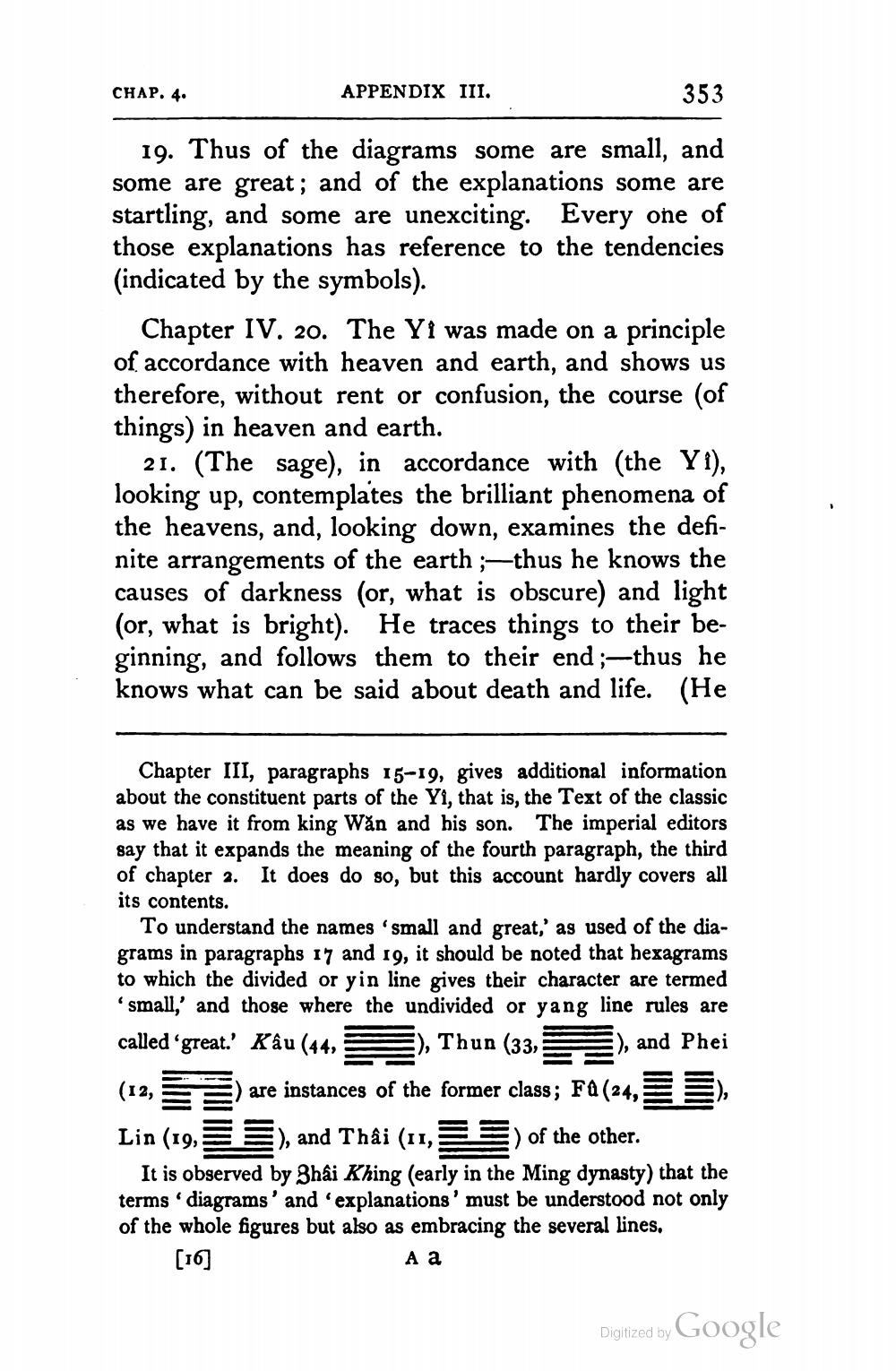________________
CHAP. 4.
APPENDIX III.
353
19. Thus of the diagrams some are small, and some are great; and of the explanations some are startling, and some are unexciting. Every one of those explanations has reference to the tendencies (indicated by the symbols).
Chapter IV. 20. The Yt was made on a principle of accordance with heaven and earth, and shows us therefore, without rent or confusion, the course (of things) in heaven and earth.
21. (The sage), in accordance with (the Yi), looking up, contemplates the brilliant phenomena of the heavens, and, looking down, examines the definite arrangements of the earth ;-thus he knows the causes of darkness (or, what is obscure) and light (or, what is bright). He traces things to their beginning, and follows them to their end ;-thus he knows what can be said about death and life. (He
Chapter III, paragraphs 15-19, gives additional information about the constituent parts of the Yi, that is, the Text of the classic as we have it from king Wăn and his son. The imperial editors say that it expands the meaning of the fourth paragraph, the third of chapter 2. It does do so, but this account hardly covers all its contents.
To understand the names small and great,' as used of the diagrams in paragraphs 17 and 19, it should be noted that hexagrams to which the divided or yin line gives their character are termed 'small,' and those where the undivided or yang line rules are called 'great.' Kâu (44, 5 ), Thun (33, 3 ), and Phei (12, ) are instances of the former class; Fa (24, 5 ), Lin (19, 5 E), and Thâi (11,5 E) of the other.
It is observed by Bhai Khing (early in the Ming dynasty) that the terms diagrams' and 'explanations' must be understood not only of the whole figures but also as embracing the several lines. [16]
Aa
Digitized by Google




